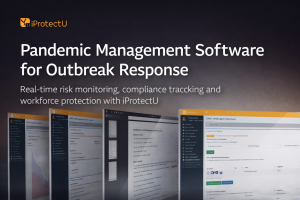Overview
For many organisations, travel is now an essential part of the job, without which, business objectives could not be delivered. Travelling is a common feature of people’s job functions, particularly as organisations expand their operations and services in response to the opportunities and drivers of globalisation.
Travel can, however, expose organisations and their employees to significant risks. Such risks may include risks to personnel, finance, business continuity and resilience, data/equipment, productivity/trip effectiveness. This can have an impact on the organisation’s legal, compliance and duty of care responsibilities.
Employees could potentially be faced with unfamiliar situations and environments. These can range from events such as a health incident or road accident, to outbreaks of disease, natural disasters, terror attacks and other crime. Such incidents can adversely affect employee safety and the outcome of their travel objectives.
Travel Risk Management software is a specialised tool designed to help organisations effectively identify, assess, and manage risks associated with international travel. Features may include risk assessment, risk mitigation, compliance, travel advisories, emergency response and data analytics.
International Standard ISO 31030:2021 Travel Risk Management
ISO 31030:2021 is a global standard that provides a structured framework for travel risk management. It’s designed to help organisations protect their employees while they’re traveling for work. Aligning travel risk management software with this standard has many benefits, listed below.
Comprehensive Approach: ISO 31030 outlines a systematic approach to travel risk management, encompassing risk identification, assessment, treatment, and monitoring. By aligning with this standard, software providers can ensure it covers the most important aspects of travel risk management.
Standardisation: Aligning with ISO 31030 promotes standardisation in travel risk management practices, making it easier for organisations to choose their software solution.
Best Practices: ISO 31030 incorporates industry best practices and lessons learned, ensuring that software aligns with successful risk management principles.
Credibility: Adherence to ISO 31030 can enhance the credibility of travel risk management software, giving businesses greater confidence in its capabilities.
Integration with Other Standards: ISO 31030 is compatible with other ISO standards related to risk management, which can facilitate integration with broader risk management systems.
Regulatory Compliance: Adherence can help organisations demonstrate compliance with relevant travel regulations and industry standards.
Continuous Improvement: The standard encourages continuous improvement, helping organisations identify areas for enhancement and adapt to changing circumstances.
iProtectU Travel Risk Management Software is fully aligned with ISO 31030:2021 Travel Risk Management
iProtectU Travel provides a fully integrated approach to managing both international and domestic travel with ease. It helps employers reduce risks and increase employee safety awareness. This software solution has been designed, built and tested in collaboration with relevant business sector leaders.
With fully integrated, up-to-date Government Foreign Office level advice, your employees will be well informed of the risks and precautions wherever they are travelling. Multiple country governments are available. This software enables you to track your employees’ location in an emergency and communicate with them. Check out our software at https://iprotectu.com/travel-management-software/

In conclusion, although research shows that travel risk management is generally not as well considered or developed as other organisational risks, specialised software does exist, as provided by iProtectU. In addition, aligning Travel Risk Management software with ISO 31030:2021 can provide organisations with a robust and effective approach to managing travel risks, ultimately enhancing employee safety and operational efficiency. This will no doubt improve overall travel management practices.








